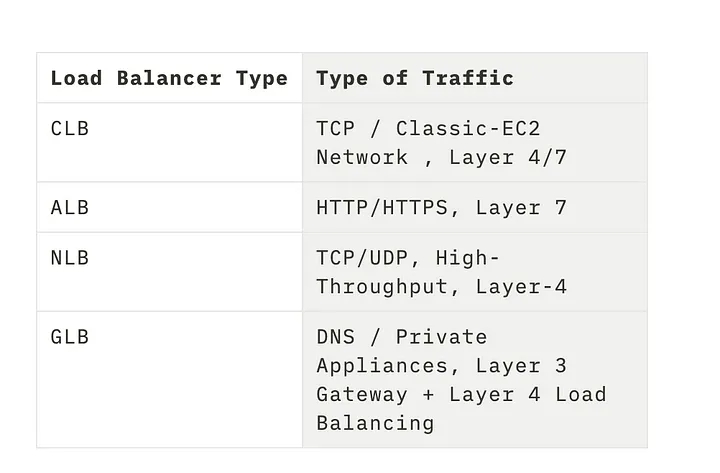< MEDIUM: https://raaki-88.medium.com/aws-advanced-networking-speciality-1-3-3ffe2a43e2f3 >
https://medium.com/towards-aws/aws-advanced-networking-task-statement-1-3-c457fa0ed893 — Has intro details for the speciality exam topic

Different types of Load-Balancers
- CLB — Classic Load Balancer
- ALB — Application Load Balancer
- NLB — Network Load Balancer
- GLB — Gateway Load Balancer
High Availability Aspect: ELB (Can be any load-balancing) can distribute traffic across various different targets, including EC2-Instances, Containers, and IP addresses in either a single AZ or multiple AZs within a region.

Health Checks: An additional health check can be included to ensure that the end hos serving the application is healthy. This is typically done through HTTP status codes, with a return value 200 indicating a healthy host. If discrepancies are found during the health check, the ELB can gracefully drain traffic and divert it to another host in the target group. If auto-scaling is set up, it can also auto-scale as needed.
Network Design: Depending on the type of traffic and Application traffic pattern, the load and burst-rate choice of load-balancer will differ.
Various Features — High-Availability, High-Throughput, Health-Checks, Sticky-Sessions, Operational-Monitoring and Logging, Delete-Protection.
TLS Termination — You can also have integrated certificate management and SSL decryption which offloads end-host CPU load and acts as a central place for SSL settings.
Security: You can use AWS Security Groups associated with VPC to provide enhanced security. Also, ELBs can be created without facing the internet and are called Non-internet-facing Load balancers.
References: https://aws.amazon.com/elasticloadbalancing/features/#compare — Great URL to see various comparison features of ELBs offered by AWS.
– Rakesh
Leave a comment